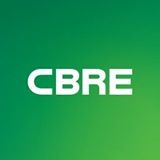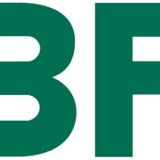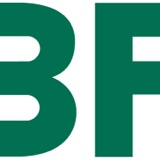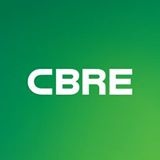Information
-
Audit Title
-
Client / Site
-
Conducted on
-
Prepared by
-
Location
-
Personnel
-
Follow Up to be performed before:
-
Name of person conducting survey:
-
Contact Information:
The hospital designs and manages the physical environment to comply with the Life Safety Code.
-
LS.01.01.01 EP 1. The hospital assigns an individual(s) to assess compliance with the Life Safety Code, complete the eSOC and manage the resolution of deficiencies.
-
LS.01.01.01 EP2 The hospital maintains a current electronic Statement of Conditions. <br>
-
Problem identified -isolated /facility wide:
-
Corrective Action Plan:
-
Responsible Party:
-
Expected Date of Completion:
-
LS.01.01.01 EP3 When the hospital plans to resolve a deficiency through a Plan for Improvement (PFI), the hospital meets the time frames identified in the PFI accepted by The Joint Commission. <br>
-
Problem identified - Isolated/Facility Wide:
-
Corrective Action Plan:
-
Responsible Party:
-
Expected Date of Completion:
The hospital protects occupants during periods when the Life Safety Code is not met or during periods of construction. (ILSM)
-
LS. 01.02.01 EP 1 The hospital notifies the fire department (or other emergency response group) and initiates a fire watch when a fire alarm or sprinkler system is out of service more than 4 hours in a 24-hour period in an occupied building. Notification and fire watch times are documented (NFPA 101-2000: 9.6.1.8 and 9.7.6.1)<br>
-
Problem identified - Isolated/Facility Wide:
-
Corrective Action Plan:
-
Responsible Party:
-
Expected Date of Completion:
-
LS.01.02.01 EP 2 The hospital posts signage identifying the location of alternative exits to everyone affected.
-
Problem identified - Isolated/Facility Wide:
-
Corrective Action Plan:
-
Responsible Party:
-
Expected Date of Completion:
-
LS.01.02.01 EP 3 The hospital has a written interim life safety measure (ILSM) policy that covers situations when Life Safety Code deficiencies cannot be immediately corrected or during periods of construction. The policy includes criteria for evaluating when and to what extent the hospital follows special measures to compensate for increased life safety risk. <br>
-
Problem identified - Isolated/Facility Wide:
-
Corrective Action Plan:
-
Responsible Party:
-
Expected Date of Completion:
-
LS.01.02.01 EP4 Inspects exits in affected areas on a daily basis. <br>
-
Problem identified - Isolated/Facility Wide:
-
Corrective Action Plan:
-
Responsible Party:
-
Expected Date of Completion:
-
LS.01.02.01 EP5 Provides temporary but equivalent fire alarm and detection systems for use when a fire system is impaired. <br>
-
Problem identified - Isolated/Facility Wide:
-
Corrective Action Plan:
-
Responsible Party:
-
Expected Date of Completion:
-
LS.01.02.01 EP6 Provides additional firefighting equipment. The need for this equipment is based on criteria in the hospital's interim life safety measure (ILSM) policy.<br>
-
Problem identified - Isolated/Facility Wide:
-
Corrective Action Plan:
-
Responsible Party:
-
Expected Date of Completion:
-
LS.01.02.01 EP7 Uses temporary construction partitions that are smoke-tight, or made of noncombustible or limited-combustible material that will not contribute to the development or spread of fire. <br>
-
Problem identified - Isolated/Facility Wide:
-
Corrective Action Plan:
-
Responsible Party:
-
Expected Date of Completion:
-
LS.01.02.01 EP8 Increases surveillance of buildings, grounds, and equipment, giving special attention to construction areas and storage, excavation, and field offices. <br>
-
Problem identified - Isolated/Facility Wide:
-
Corrective Action Plan:
-
Responsible Party:
-
Expected Date of Completion:
-
LS.01.02.0 EP9 Enforces storage, housekeeping, and debris-removal practices that reduce the building’s flammable and combustible fire load to the lowest feasible level. <br>
-
Problem identified - Isolated/Facility Wide:
-
Corrective Action Plan:
-
Responsible Party:
-
Expected Date of Completion:
-
LS.01.02.01 EP10 Provides additional training to those who work in the hospital on the use of firefighting equipment. <br>
-
Problem identified - Isolated/Facility Wide:
-
Corrective Action Plan:
-
Responsible Party:
-
Expected Date of Completion:
-
LS.01.02.01 EP11 Conducts one additional fire drill per shift per quarter. <br>
-
Problem identified - Isolated/Facility Wide:
-
Corrective Action Plan:
-
Responsible Party:
-
Expected Date of Completion:
-
LS.01.02.01 EP12 Inspects and tests temporary systems monthly. <br>
-
Problem identified - Isolated/Facility Wide:
-
Corrective Action Plan:
-
Responsible Party:
-
Expected Date of Completion:
-
LS.01.02.01 EP13 The hospital conducts education to promote awareness of building deficiencies, construction hazards, and temporary measures implemented to maintain fire safety. <br>
-
Problem identified - Isolated/Facility Wide:
-
Corrective Action Plan:
-
Responsible Party:
-
Expected Date of Completion:
-
LS.01.02.01 EP14 The hospital trains those who work in the hospital to compensate for impaired structural or compartmental fire safety features. <br>
-
Problem identified - Isolated/Facility Wide:
-
Corrective Action Plan:
-
Responsible Party:
-
Expected Date of Completion:
The hospital maintains fire safety equipment and fire safety building features.
-
EC.02.03.05 EP 1 At least quarterly, the hospital tests supervisory signal devices (except valve tamper switches). <br>NFPA 72, 1999 edition (table 7-3.2)
-
Problem identified - Isolated/Facility Wide:
-
Corrective Action Plan:
-
Responsible Party:
-
Expected Date of Completion:
-
EC.02.03.05 EP 2 Every 6 months, the hospital tests valve tamper switches and water-flow devices. <br>(NFPA 25, 1998 edition (Sections 2-3.3 and 3-3.3) and NFPA 72, 1999 edition (Table 7-3.2)
-
Problem identified - Isolated/Facility Wide:
-
Corrective Action Plan:
-
Responsible Party:
-
Expected Date of Completion:
-
EC.02.03.05 EP 3 Every 12 months, the hospital tests duct detectors, electromechanical releasing devices, heat detectors, manual fire alarm boxes, and smoke detectors. NFPA 72, 1999 (table 7-3.2)<br>
-
Problem identified - Isolated/Facility Wide:
-
Corrective Action Plan:
-
Responsible Party:
-
Expected Date of Completion:
-
EC.02.03.05 EP 4 Every 12 months, the hospital tests visual and audible fire alarms, including speakers. NFPA 72, 1999 (Table 7-3.2) <br>
-
Problem identified - Isolated/Facility Wide:
-
Corrective Action Plan:
-
Responsible Party:
-
Expected Date of Completion:
-
EC.02.03.05 EP 5 Every quarter, the hospital tests fire alarm equipment for notifying off-site fire responders. NFPA 72, 1999 (table 7-3.2)<br>
-
Problem identified - Isolated/Facility Wide:
-
Corrective Action Plan:
-
Responsible Party:
-
Expected Date of Completion:
-
EC.02.03.05 EP 6 For automatic sprinkler systems: Every week, the hospital tests fire pumps under no-flow conditions. NFPA 25, 1998 <br>
-
Problem identified - Isolated/Facility Wide:
-
Corrective Action Plan:
-
Responsible Party:
-
Expected Date of Completion:
-
EC.02.03.05 EP 7 For automatic sprinkler systems: Every 6 months the hospital tests water-storage tank high-and low-water level alarms. The completion date is documented. NFPA 25, 1998 edition (Section 6-3.5)
-
Problem identified - Isolated/Facility Wide:
-
Corrective Action Plan:
-
Responsible Party:
-
Expected Date of Completion:
-
EC.02.03.05 EP 8 For automatic sprinkler systems: Every month during cold weather, the hospital test water - storage tank temperature alarms. The completion date of the test is documented NFPA 25, 1998 (Section 6-3)
-
Problem identified - Isolated/Facility Wide:
-
Corrective Action Plan:
-
Responsible Party:
-
Expected Date of Completion:
-
EC.02.03.05 EP9 For automatic sprinkler systems: Every 12 months, the hospital tests main drains at system low point or at all system risers. NFPA 25, 1998 (Section 9-2.6)<br>
-
Problem identified - Isolated/Facility Wide:
-
Corrective Action Plan:
-
Responsible Party:
-
Expected Date of Completion:
-
EC.02.03.05 EP10 For automatic sprinkler systems: Every quarter, the hospital inspects all fire department water supply connections. NFPA 25, 1998 (Section 9-7.1) <br>
-
Problem identified - Isolated/Facility Wide:
-
Corrective Action Plan:
-
Responsible Party:
-
Expected Date of Completion:
-
EC.02.03.05 EP11 For automatic sprinkler systems: Every 12 months, the hospital tests fire pumps under flow. NFPA 25, 1998 edition<br>
-
Problem identified - Isolated/Facility Wide:
-
Corrective Action Plan:
-
Responsible Party:
-
Expected Date of Completion:
-
EC.02.03.05 EP12 Every 5 years, the hospital conducts water-flow tests for standpipe systems. NFPA 25, 1998 edition<br>
-
Problem identified - Isolated/Facility Wide:
-
Corrective Action Plan:
-
Responsible Party:
-
Expected Date of Completion:
-
EC.02.03.05 EP13 Every 6 months, the hospital inspects any automatic fire-extinguishing systems in a kitchen. NFPA 96, 1998 edition<br>
-
Problem identified - Isolated/Facility Wide:
-
Corrective Action Plan:
-
Responsible Party:
-
Expected Date of Completion:
-
EC.02.03.05 EP 14 Every 12 months, the hospital tests carbon dioxide and other gaseous automatic fire-extinguishing systems. The completion date of the test is documented.
-
Problem identified - Isolated/Facility Wide:
-
Corrective Action Plan:
-
Responsible Party:
-
Expected Date of Completion:
-
EC.02.03.05 EP15 At least monthly, the hospital inspects portable fire extinguishers. NFPA 10 1998 (Section 1-6, 4-3, and 4.4)<br>
-
Problem identified - Isolated/Facility Wide:
-
Corrective Action Plan:
-
Responsible Party:
-
Expected Date of Completion:
-
EC.02.03.05 EP16 Every 12 months, the hospital performs maintenance on portable fire extinguishers. NFPA 10, 1998 edition (Sections 1-6, 4-3, and 4.4)<br>
-
Problem identified - Isolated/Facility Wide:
-
Corrective Action Plan:
-
Responsible Party:
-
Expected Date of Completion:
-
EC.02.03.05 EP 17 The hospital conducts hydrostatic tests on standpipe occupant hoses 5 years after installation and 3 years thereafter. Completion date is documented. NFPA 1962, 1998 edition(Section 2-3), and NFPA 25, 1998
-
Problem identified - Isolated/Facility Wide:
-
Corrective Action Plan:
-
Responsible Party:
-
Expected Date of Completion:
-
EC.02.03.05 EP18 The hospital operates fire and smoke dampers 1 year after installation (commencing Jan 2010) and then at least every 4 years to verify that they fully close. NFPA 90A, Standard of Installation of Air Conditioning and ventilation systems, NFPA 25, 1999 Edition.<br>
-
Problem identified - Isolated/Facility Wide:
-
Corrective Action Plan:
-
Responsible Party:
-
Expected Date of Completion:
-
EC.02.03.05 EP19 Every 12 months, the hospital tests automatic smoke-detection shutdown devices for air-handling equipment. NFPA 90A Standard for Installation of Air Conditioning and Ventilation Systems, 1999 Edition (Section 4-4.1)
-
Problem identified - Isolated/Facility Wide:
-
Corrective Action Plan:
-
Responsible Party:
-
Expected Date of Completion:
-
EC.02.03.05 EP20 Every 12 months, the hospital tests sliding and rolling fire doors for proper operation and full closure. The completion date of the tests is documented. NFPA 80, 1999 edition (Section 15-2.4).<br>
-
Problem identified - Isolated/Facility Wide:
-
Corrective Action Plan:
-
Responsible Party:
-
Expected Date of Completion:
The hospital manages risks associated with its utility systems.
-
EC.02.05.01 EP 6 (CLD) In areas designed to control airborne contaminants, the ventilation system provides appropriate pressure relationships, air-exchange rates, and filtration efficiencies.
-
Problem identified - Isolated/Facility Wide:
-
Corrective Action Plan:
-
Responsible Party:
-
Expected Date of Completion:
-
EC.02.05.01 EP7 The hospital maps the distribution of its utility systems. <br>
-
Problem identified - Isolated/Facility Wide:
-
Corrective Action Plan:
-
Responsible Party:
-
Expected Date of Completion:
-
EC.02.05.01 EP 8 The hospital labels utility system controls to facilitate partial or complete emergency shutdowns.
-
Problem identified - Isolated/Facility Wide:
-
Corrective Action Plan:
-
Responsible Party:
-
Expected Date of Completion:
The hospital inspects, tests, and maintains emergency power systems
-
EC.02.05.07 EP 1 Battery powered egress lights are tested monthly for 30 seconds.
-
Problem identified - Isolated/Facility Wide:
-
Corrective Action Plan:
-
Responsible Party:
-
Expected Date of Completion:
-
EC.02.05.07 EP 2 Battery powered egress lights are tested annually for 90 seconds
-
Problem identified - Isolated/Facility Wide:
-
Corrective Action Plan:
-
Responsible Party:
-
Expected Date of Completion:
-
EC.02.05.07 EP 3 quarterly function of SEPSS for 5 min./class / 60% full duration of class Annually.<br>SEPSS for critical areas inspected monthly
-
Problem identified - Isolated/Facility Wide:
-
Corrective Action Plan:
-
Responsible Party:
-
Expected Date of Completion:
-
EC.02.05.07 EP 4. Twelve times a year, at intervals of not less than 20 days and not more than 40 days, the hospital tests each emergency generator for at least 30 continuous minutes.
-
Problem identified - Isolated/Facility Wide:
-
Corrective Action Plan:
-
Responsible Party:
-
Expected Date of Completion:
-
EC.02.05.07 EP 5. monthly load test 30% of exhaust gas temp or annual load bank 20/50/75%
-
Problem identified - Isolated/Facility Wide:
-
Corrective Action Plan:
-
Responsible Party:
-
Expected Date of Completion:
-
EC.02.05.07 EP 6. All transfer switches 12 times per year.
-
Problem identified - Isolated/Facility Wide:
-
Corrective Action Plan:
-
Responsible Party:
-
Expected Date of Completion:
-
EC.02.05.07 EP 7. Generator load test once every 36 months for 4 hours. (30%of nameplate)
-
Problem identified - Isolated/Facility Wide:
-
Corrective Action Plan:
-
Responsible Party:
-
Expected Date of Completion:
Medical Gas and Vacuum Systems are inspected and tested
-
EC.02.05.09 EP 1 Review Maintenance program and testing documentation (Test, inspect, and maintain: Master panels, area alarms, automatic pressure switches, shut-off valves, flexible connectors, outlets (bulk, manifolds, med air)
-
Problem identified - Isolated/Facility Wide:
-
Corrective Action Plan:
-
Responsible Party:
-
Expected Date of Completion:
The hospital establishes and maintains a safe, functional environment.
-
EC.02.06.01 EP 1 Interior spaces meet the needs of the patient population and are safe and suitable to the care, treatment, and services provided.<br><br>* Compressed gas cylinders are secured properly<br>* Evacuation routes are posted and up to date<br>* Bulk O2 storge - free of debris,no storage of anything other than low level reserve tank/cylinders. Properly secured and out of direct sunlight.
-
Problem identified - Isolated/Facility Wide:
-
Corrective Action Plan:
-
Responsible Party:
-
Expected Date of Completion:
-
EC.02.06.01 EP 13 (CLD) The hospital maintains ventilation, temperature, and humidity levels suitable for the care, treatment, and services provided.
-
Problem identified - Isolated/Facility Wide:
-
Corrective Action Plan:
-
Responsible Party:
-
Expected Date of Completion:
Building tour deficiencies (as applicable) to include: Fire Dooors Sprinkler Heads Stairwells
-
Other:
-
Follow up needed:













